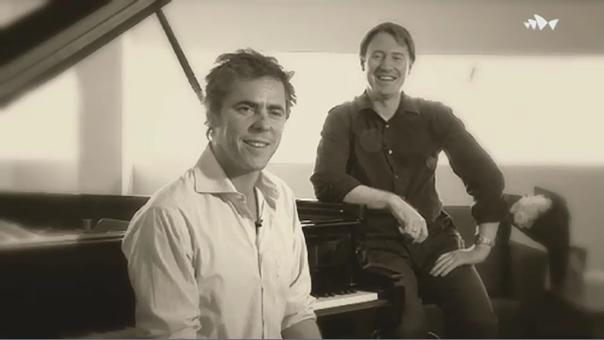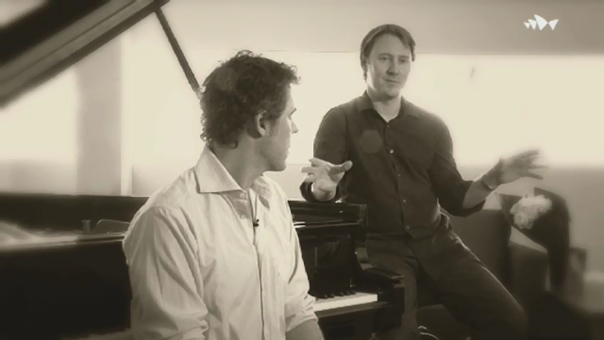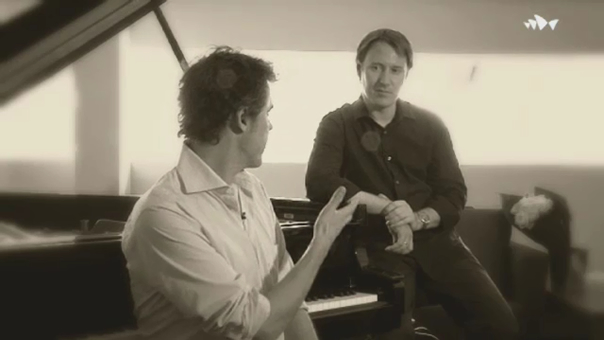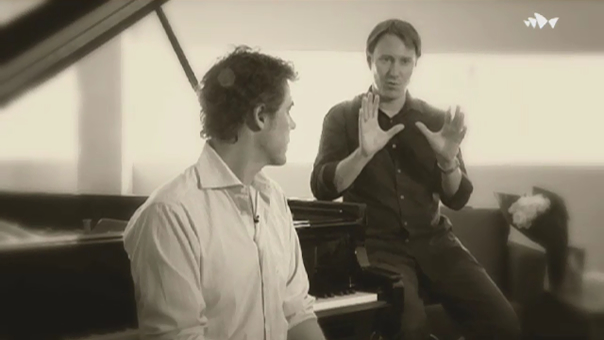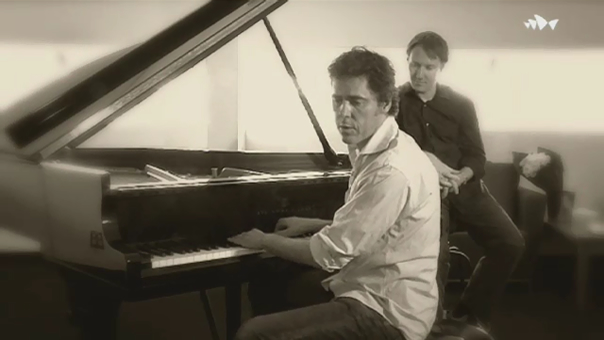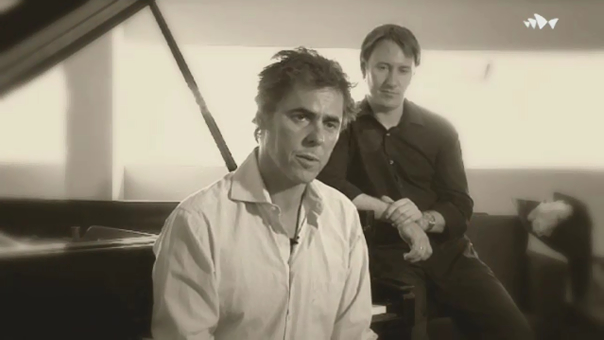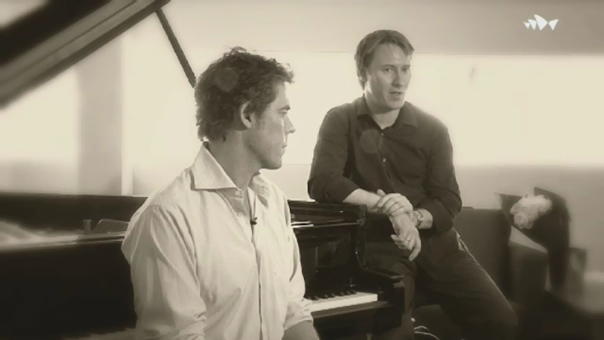Songwriter and composer
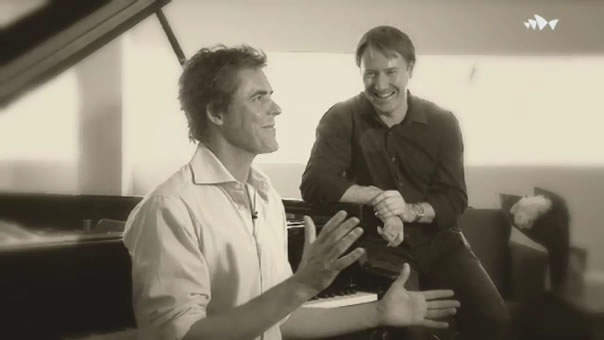
NSW DEC Copyright 2015
Viewing guide
-
What advantages might there be working with a symphony orchestra? What challenges could it also bring?
-
In a small group, or as a class, discuss some of the skills, knowledge and understanding involved in arranging a composition or song for an ensemble.
-
Note down the three reasons Tim gives for why he thinks ‘these big arrangements’ work well with the band?
-
List the musicians who arranged songs for the concert with the Sydney Sinfonia. Note one or more characteristics of their arranging style.
-
What miscommunication did Tim and Peter Sculthorpe have? Did this have a positive or negative outcome?
-
What is one of Sculthorpe’s trademarks? How do people often respond to it?
-
Discuss with other students what you think Tim means by ‘less conventional chords’ to ‘surprise my own ears.’
-
Why do you think he describe the resulting sound as ‘the beautiful maelstrom around us’?
-
How did Sculthorpe differ from the other arrangers?
-
What do you think Tim means when he says Sean O’Boyle ‘buttresses the melody lines’
-
Tim mentions the different arrangers and their characteristic arrangements. Choose one and describe their style. Search for information about them on the internet.
-
What is the difference between arranging and composing?
-
Compose a motif that is ethereal, swimming and queasy, or fluid. Experiment with the motif to achieve a different result.
-
Use vocal sounds to create a pattern imitating ‘punctuating brass’. Improvise based on your chosen style.
[Music: No Aphrodisiac by The Whitlams performed with the Sydney Symphony Sinfonia]
Freya Lombardo (interviewer): Tim, can you highlight the advantages of working with a symphony orchestra?
Tim Freedman: When I went to the first rehearsal with the Western Australia Symphony Orchestra in 2004 I was surprised how well these big arrangements worked with the band. I don’t know why that is, I think the mixture of the fact that I do put some less conventional chords in the music. When I’m writing a song I like to surprise my own ears. That’s the first rule. It works because of that and I also think we play a particularly melodic type of sort of pop rock folk so it’s allowed the arrangers to sort of launch off my melodies. Apart from that it’s not a particularly difficult thing for us to do, we just sit back and listen to the beautiful maelstrom around us.
Freya: We’ve heard arrangements today from The Whitlams, Ben Northey, Peter Sculthorpe, Brett Dean and James Ledger. How do you choose the arrangers for your music?
Tim: Some fellows are very good at making sort of ethereal, swimming strings. You know that’s one of Ben’s things. That’s why he chose a couple of tracks that he did. He likes sort of a queasy, almost sometimes a queasy sort of ...
Ben Northey: I’ll take that as a compliment.
Tim: Not queasy, I mean fluid, very fluid sounding string parts and because he’s a brass player he’s good at punctuating brass. [Tim imitates brass sound.] He does that sort of thing very well. Brett Dean is someone you use when you want something quite dark because he uses a lot of dissonance and a lot of very surprising notes. And then Sean O’Boyle is a fellow from Brisbane that I get to arrange some songs. He’s really good at doing songs that I don’t think particularly need a big arrangement. He goes straight down the middle. He sort of buttresses the melody lines and has nice crescendos and he’s not too fancy and that suits some songs that I think are already, wouldn’t be the first ones you’d think need extra instrumentation. So Sean O’s a good, up-the-middle, talented arranger I think. Sculthorpe, well I thought he would be more of an atmospheric arranger but he took the opportunity with these songs to actually be a lot more lyrical than he often is and so he actually enjoyed writing more melody lines, or sort of straight melody lines, than he normally would. When he first played Out the Back to me he said, ‘Oh, this has been wonderful, I feel like it’s a cross between Peter Sculthorpe and Duke Ellington’. And I thought he was going to just basically compose strings that went with the music, you know just on top, in between, but that the band would be playing all the time. But he misunderstood what I wanted and he said, ‘Oh I’ve written a whole movement’ and so the band ... I said ‘Oh lovely’… so the band stops and then there’s seven minutes of Sculthorpe. He got carried away basically. He thought, oh this is good, this is different for me and he just enjoyed it and went off. So, it was an honour to have a whole movement of Sculthorpe’s music.
[Music from Sculthorpe’s arrangement]
Tim: He invented seagulls on the cello.
Ben: He did, he did, yeah.
Tim: And I said to him I said, ‘Peter, I hope I’m going to get some seagulls?’
Ben: Yeah, well you know you expect ...
Tim: And I got seagulls.
Ben: You did, yeah and it’s beautiful. I mean it’s Out the Back, it was about the ocean and ...
Tim: He put seagulls in songs that are about motorcars, so he obviously put some seagulls in this one which is actually about the ocean where there are seagulls.
Ben: It’s very effective I have to say and it’s lovely for the audience to hear an extended technique that they can identify with.
Tim: The orchestra always goes, because they get to know composers very well, they see Sculthorpe and they go, ‘Oh, where are the seagulls?’ ‘cause it’s just one of his trademarks. However when the crowd hears them, you can see them look around going ‘What? Are there bird noises in the PA?’ And the kids today when they heard seagulls, you could automatically hear this twitter as people [are] going, ‘It’s them birds’. So they’re very evocative and I’m glad there are some seagulls. And I think that’s a lot of people’s favourite bit of the concert as well because it’s when they get to hear the strings unadulterated and I think they get to realise how satisfying it might be to come to hear a whole hour of just strings. People hopefully might go and see the Australian Chamber Orchestra or come and see a symphony again after having heard that little six minutes of orchestral music.
[Music and applause]
